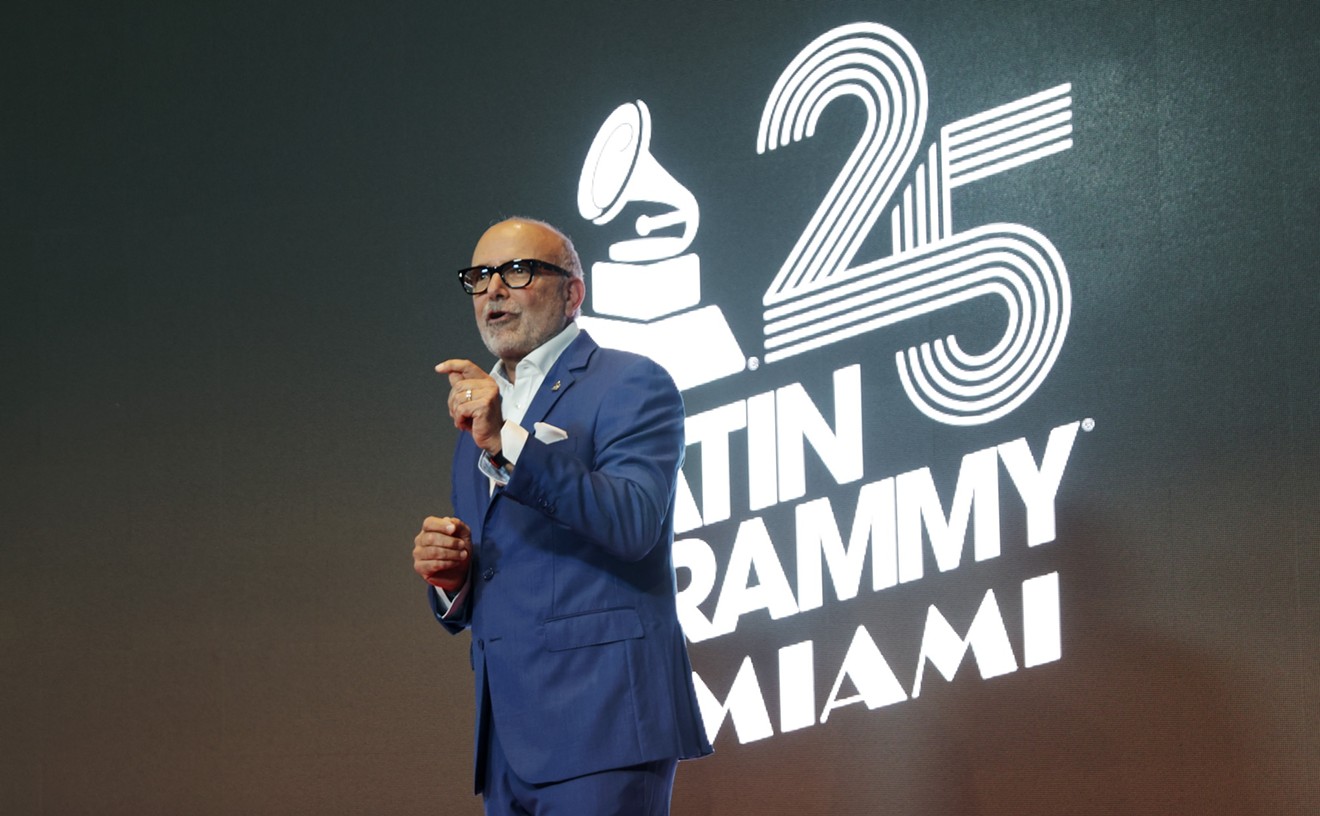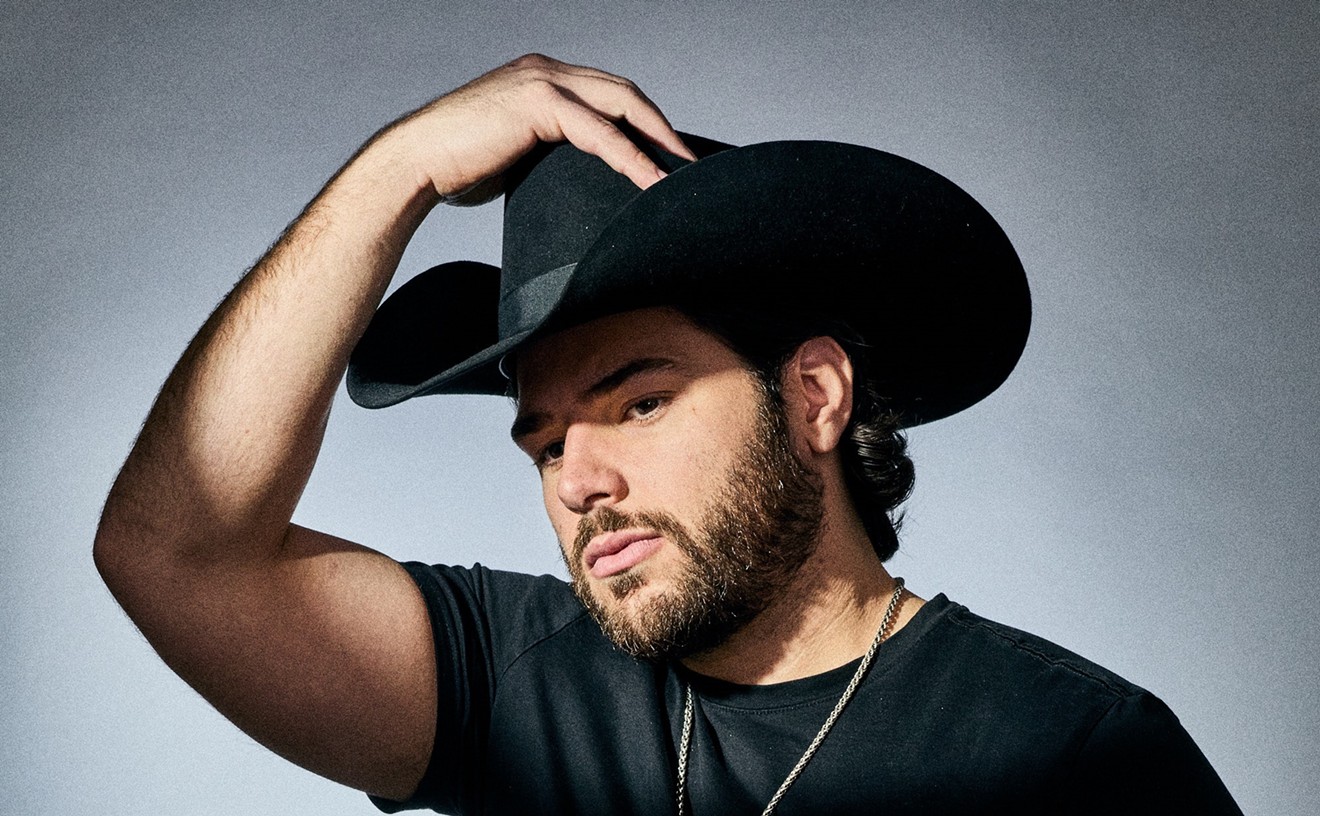Too bad it's Tampa.
The rock scene in the Tampa/St. Petersburg area, like the cities themselves, is smaller and younger than Miami's. South Florida has at least three times as many working rock bands, and can also brag that several of these have been signed by major labels. But it is not the quality of the music and its purveyors that's at issue here. It's everything that goes along with the actual music making.
"My theory is that the reason Tampa has more coverage is that the people in the key positions, the people making the decisions, are the same people who are really into local music," says Tampa promoter Max Borges, who stages local awards extravaganzas there and here. "In Miami the real important people, the editors and program directors, in general, seem to be above the local scene. The people who are into it don't have as much clout." The great irony there, Borges suggests, is that there is much more public support and interest in Miami. "There's no club here that is as successful as, say, the Button South," Borges continues. "We do not have bigger turnouts for shows here. In Miami, even without the media support, you have the people support. I think the two scenes are pretty close, although you've had some major signings, which is killer."
If major-label signings are a measure of success, Miami does have the upper hand with Nuclear Valdez (Epic), the Mavericks (MCA), Saigon Kick (Atlantic), and others. The only group to achieve national status out of Tampa is Savatage, signed by Atlantic about seven years ago. While A&R reps at these labels were reluctant to enter the Tampa vs. Miami debate, several sources say that both cities are highly regarded by talent scouts. "The record labels know what's going in a big way," says Austin Keys, music director for the Bay area's WXTB-FM. "We have A&R people from California and New York coming in and they're amazed at the material being recorded and the number of unsigned acts in Florida. Here, as opposed to L.A., the bands don't spend money showcasing, they use it to record because they're getting airplay."
Keys, who's been working in Tampa for three-and-a-half years, is not into local music for altruistic purposes alone. He says the addition of area talent has been a boon, both financially and artistically. "It helps our ratings in several ways," he says. "It gave us that street hipness, for one thing. It delivered that element immediately."
There is a difference between radio there and here, a profound difference. The Tampa Bay area has two contemporary, commercial AOR radio stations that compete for listeners. Miami has WSHE-FM. About a year ago, the Tampa area's top rock station, WYNF-FM, began a show called The Cutting Edge, which evolved into This Is Radio Clash, which mixes local material with national releases, and features a monthly concert by a hometown band performing at Morrisound, a studio whose owners have played a key role in Tampa's scene. Rival station WXTB had the first show for locals, and followed WYNF's live-performance lead by incorporating a live simulcast of shows at the Rock-It, Tampa's major rock club. WXTB's Keys claims that his station has recently ascended to WYNF's ratings level, and predicts they'll surpass the competition in the next ratings period, thanks in big part to the incorporation of local sounds.
WXTB's Sunday-night show began as an hour-long adventure into things homegrown. Then it expanded to fill the 9:00 to 11:00 p.m. slot. Then it grew to three hours. "I was playing everybody that had studio-quality material," Keys says. "And there was this onslaught. The discovery of what was going on was incredible. And it got better and better and better. As our ratings increased, YNF started a `local lick.' Competition certainly plays a big role in all this."
John Tovar, the well-known and successful local band manager, has taken to mining the fertile Tampa rock field, enlisting that area's Factory Black and considering others. "I was there not long agofor two days," he says. "I'm driving around Tampa and I hear Factory Black [on the radio] at three in the afternoon, right after Great White. That's totally unheard of here. I think there's more unity up there by the movers and shakers. They have a common goal: They want Tampa Bay to make a stand when it comes to the Florida scene. Between the two radio stations, the newspapers, a great magazine called Players, you have an excellent megasupport of the local scene. People from other parts of the country, and even the world, like Sepultura from Brazil, are now going to Tampa to record. We have more places to play down here and probably more support in terms of each band having an audience. But in terms of a scene, Tampa has a bond of making it happen. It's pretty sad we don't have that down here."
Despite a relative lack of rock clubs, enterprising Bay bands have found ways to play live. "There are maybe three or four clubs," says Factory Black singer Brian Merrill. "But we have alternative venues. We rent theaters where we put on our own shows and we use regular concert venues." Nonetheless Merrill supports the general view of the Tampa scene's tangential factors as superior to Miami's. He says the two AOR stations are "open and supportive." And, he adds, "The Tampa Tribune and its insert, Tampa Bay Times, mix in local stuff. The St. Pete Times has more than your [daily] paper probably, but not as much as we'd like. We always want more." In fact, both daily papers allot section fronts and double-page spreads to events such as the Tampa Bay Rock Awards, Max Borges's other annual event. The Miami Herald has in the past provided some, but not much, coverage of the South Florida Rock Awards. New Times has provided almost none.
However, New Times adopted in the very beginning a policy of covering local music in the same way that it covers national acts -- if the music is good, the music is good, major-label backing or not. For four years this newspaper has published as many articles about area music as about any other topic. The Miami Herald's former music critic, Doug Adrianson, hopped on that bandwagon and became a key player in the local scene because of it. The paper's current pop critic writes almost exclusively about national topics, but the daily has, much to its credit, initiated a weekly feature spotlighting area talent, written by Mario Tarradell.
The Tampa-area daily papers also seem to have followed the lead of that area's alternative weekly, Creative Loafing. Tom Roe, who's covered music for Creative Loafing the past couple of years, says,
"The guy at the Tribune patterned a column after one I do called `Music Menu.' He does `Club Calls' and it's pretty similar. The same time all this started, Players magazine didn't really exist. It came out about two years ago and did all this local-music stuff. Then the Trib started. The Times runs some record reviews and an occasional feature. The scene here is doing pretty good for itself. The big problem is getting the national people to take it seriously."
Spotlighting local talent can have its drawbacks, according to promoter Borges, who otherwise wallows in publicity, both for his events and for the bands. He says helping bands gain popularity and financial backing is the driving force behind his awards shows, but adds, "One thing I wonder about in Tampa is that with all this media support, I don't know if it's doing any good or if it's a case of people hearing so much that they don't care any more. We have a lot of big events, benefits and such, that have local bands. The same ones. I mean, you only have so many good bands to choose from, and you can only exploit one so much before the public says, `How about a new one?' If Miami got as much coverage, that could happen there."
Most of what John Tovar calls the "movers and shakers" in both cities have a vision for the future that could solve whatever problems exist in both scenes. For years Miami was ignored by national touring acts who thought it wasteful to travel 600 or 700 miles into Florida for the sake of one appearance. The concert promoter Bandman Productions solved that problem when it formed in the mid-Eighties. It established offices in both areas, and booked acts in both locales, thereby making a southbound jaunt more worthwhile. By working together, in various ways, the two cities might be able to help one another get that much-sought national attention as well.
At least two of the bands scheduled to appear at the next Miami Rocks, Too! showcase are from Tampa -- Factory Black and the Catherine Wheel. "We felt it would strengthen the event," says Rocks co-organizer Georgina Vidal. "It's still Miami Rocks because the focus is on South Florida bands and the event takes place here. Our position is to choose the best bands, whatever category, that can strengthen the event and help the area. We don't view Miami bands and Ft. Lauderdale bands and Tampa bands as a competition thing. I think the thing with Tampa is that being a little smaller, they're more community minded."
Charlie Logan, the program director at WYNF who competes with Austin Keys's WXTB, adds, "The reason Tampa Bay plays local music is that you have a program director at our station and at the other rock radio station that give a shit about the local rock scene.










